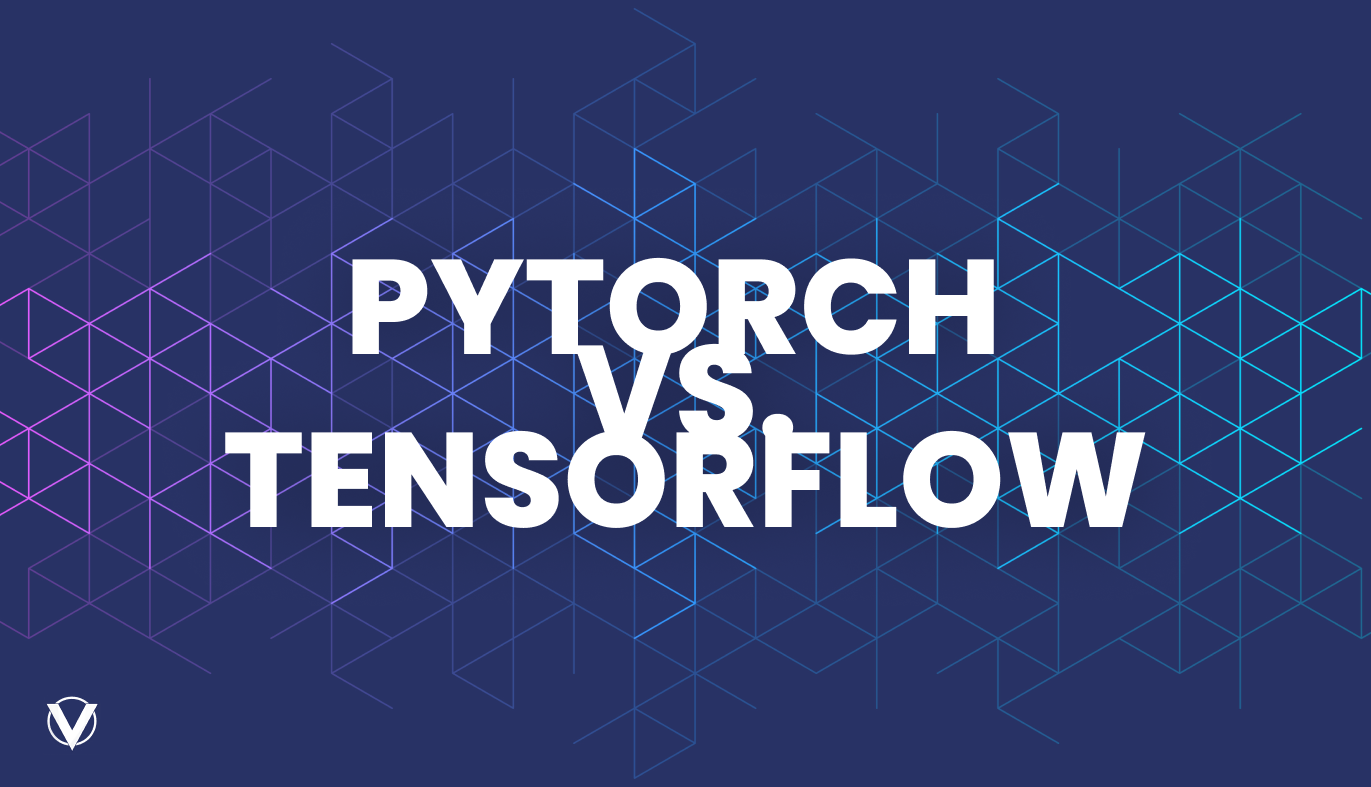PyTorch vs TensorFlow: Which One Is Right For You

PyTorch vs TensorFlow: Which One Is Right For You?
PyTorch and TensorFlow are two of the most widely used deep learning libraries in the field of artificial intelligence. Both are supported on Vast.ai with easy to use templates. PyTorch, initially developed by Meta, offers an intuitive approach to building neural networks and is favored for its flexibility and ease of use in research. On the other hand, TensorFlow, developed by Google Brain, is designed for large-scale and complex machine learning models, with strong support for production environments. This article will compare PyTorch and TensorFlow, helping you understand which library may be more suitable for your project's needs and computational requirements.
PyTorch Overview
PyTorch, initially developed by Meta, has quickly become a top choice for deep learning enthusiasts and professionals thanks to its dynamic computational graphing and deep integration with the Python language. It's specifically designed to facilitate rapid development and iteration of deep learning models, resonating with the workflow of many developers.
The true power of PyTorch comes when combined with NVIDIA's CUDA, a parallel computing platform that allows dramatic increases in computing performance by harnessing the power of GPUs. With CUDA, PyTorch can perform data-intensive computations at a fraction of the time it would take on traditional CPUs. This capability is very important when training complex models or dealing with massive datasets, a common task in AI research and development.
PyTorch also supports production needs with tools like TorchScript for model exporting and TorchServe for deployment. Its ecosystem is full of specialized libraries, fostering a collaborative environment where developers share tools and pre-built models, enhancing the PyTorch experience for both research and industry use.
TensorFlow Overview
TensorFlow, developed by the Google Brain team, has also become one of the most widely used frameworks in the industry due to its scalable and flexible architecture. Its architecture centers around a static computational graph that simplifies and accelerates data processing. This feature, combined with its capacity for distributed computing, makes TensorFlow ideal for large-scale projects. In addition, transitioning models from the lab to the field is seamless with TensorFlow, thanks to tools like TensorFlow Serving for servers and TensorFlow Lite for mobile devices.
Furthermore, TensorFlow's integration with TensorFlow Extended (TFX) eases the creation of end-to-end machine learning workflows, making it more suitable for production use. The platform also includes comprehensive tools such as TensorBoard, which simplifies model analysis and debugging with its visualization capabilities.
The framework has fostered a massive community ranging from academic researchers to industry professionals. This diverse user base benefits from a large source of educational materials, add-ons from third parties, and forums for troubleshooting. Its widespread use in the corporate sector attests to TensorFlow's dependability and advanced capabilities. Ongoing input from this community contributes to TensorFlow's growth, keeping it at the forefront of AI application development.
Comparing PyTorch and TensorFlow Metrics
Performance Comparison
Both PyTorch and TensorFlow offer fast performance, but they do come with their own set of advantages and disadvantages. A benchmark comparison revealed that PyTorch had a better performance compared to TensorFlow, particularly when offloading most of the computation to the cuDNN and cuBLAS libraries, which are essential components for GPU-accelerated computing. However, performance can vary depending on the specific use case and hardware, with both frameworks capable of achieving high performance when properly optimized.
Training Time and Memory Usage
In a direct comparison utilizing CUDA, PyTorch outperforms TensorFlow in training speed, completing tasks in an average of 7.67 seconds against TensorFlow's 11.19 seconds. However, TensorFlow is more memory-efficient, using 1.7 GB of RAM during training compared to PyTorch’s 3.5 GB. Therefore, for quicker training, PyTorch is favorable, but for lower memory usage, TensorFlow is the better choice.
Ease of Use
PyTorch is often favored for its intuitive, Pythonic interface, making it easier for rapid prototyping, especially when utilizing CUDA for GPU acceleration. On the other hand, TensorFlow, although having a steeper learning curve, offers a more structured environment suitable for large-scale or commercial projects. Over time, TensorFlow has improved its usability, making it more approachable, but PyTorch is still considered more usable. In the end, PyTorch is simpler for research and development, while TensorFlow is structured for larger, production-oriented projects. However, regardless of which framework fits your project’s requirements, the computational requirements remain a substantial factor that can influence your choice.
Addressing Computational Demands with Vast.ai
The computational intensity of working with PyTorch or TensorFlow can present challenges, especially when processing large datasets or training complex models. Both frameworks perform much better with high-performance GPUs, but they are not always readily accessible or economically feasible for every developer. Vast.ai steps in to fill this gap by offering affordable and scalable GPU resources. With Vast.ai, developers and researchers can expedite training times and scale computing resources in tandem with their project demands, effectively leveraging the strengths of either framework without hardware limitations.
Conclusion
In the end, your choice between PyTorch and TensorFlow should align with your project requirements: PyTorch for its user-friendly nature in research and development, and TensorFlow for its robustness in large-scale, production-level projects. Both frameworks have their merits and can be significantly enhanced by overcoming hardware limitations, a service that Vast.ai provides effectively. With the right tools and resources, you can ensure that your machine learning projects are not only innovative but also computationally feasible.



